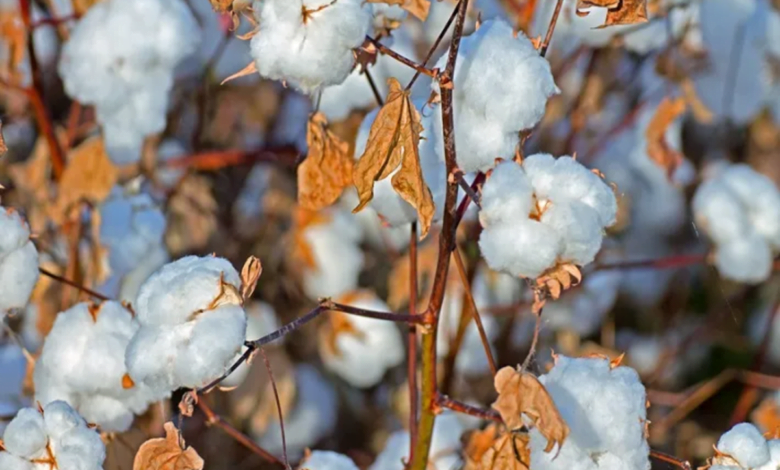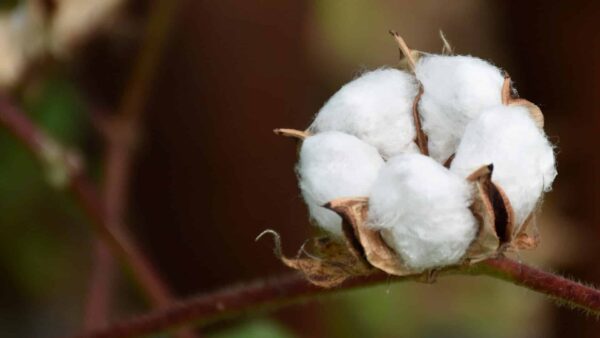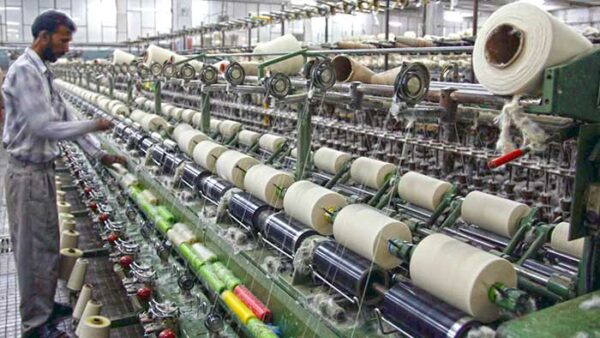Banning Cotton Export- Is it a good idea?

Cotton Export: Union Textiles Minister Piyush Goyal met with cotton merchandisers, shop drivers, and apparel manufacturers on Wednesday, May 18. Cotton prices are soaring, egging material and apparel companies to call for a boycott of the fibre’s products. This comes just days after the government confined wheat shipments on May 13 due to rising costs caused by an intensity surge- convinced creation deficit. Is there any other case of relative restrictions on cotton exports?
How important have cotton prices risen?
In comparison to the former time, they’ve nearly multiplied. If we talk about the recent prices, then on Thursday, the most- handed cost estimate of kapas ( crude-ginned cotton) at Rajkot APMC (Agricultural Produce Market Committee) mandi was approximately around 12200 per quintal, compared to around Rs 6290 this time last time. This cotton price was high compared to the base support price fixed by the government, which is Rs 6025 per quintal for long-chief cotton kinds.
The cost has been rising since November, when they surpassed Rs 8000 per quintal for the first time in a long time, before crossing the Rs 10,000 mark for the first time in a long time in early January. Showcasing season for marketing lasts from October to September, with over 90 of the arrival of crop preliminarily being by May end.
Why has the price risen so dramatically?

There are three main reasons why the prices have risen.
- Lower Creation- Lower creation of cotton is one of the biggest causes why the prices have risen. India’s total production in the year 2020-21 was 353 lakh (lb) of 170 kg each. The Cotton Association of India (CAI), a trade body situated in Mumbai, has estimated product for the current time at323.63 lb. This result of figures delivered on May 14 is lower than former estimates of 335.13 lb (on April 9),343.13 lb (on February 25), and 348.13 lb (on January 18), and360.13 lb (on May 14). (October 30).
- Global costs- The second reason why the prices increased was because of the global costs. The Cotlook’A’ Indicator cost the price of cotton as per standard of agent quotations in the Far East market places sectors-is now ruling at 167 pence for every pound, over from 92 pence a time ago. India is the world’s second-largest producer of cotton (after China) and the third-largest exporter (after the US and Brazil). Exporting cotton to other countries has become interesting due to high transnational costs. Also, they’ve pushed homegrown costs closer to transferring out equivalency situations while making significance more precious.
- Utilization- The third reason is utilization. In March, Cotton Corporation of India (CCI) extended absolute homegrown utilization for 2021-22 to 345 lb, over from334.87 lb,269.19 lb, and311.21 lb in the first three promoting times.” As miles and other manufacturers have been operating in crummy situations in recent times, the demand has increased. However, during the epidemic, demand for bedsheets and napkins increased, performing in increased use of cotton and yarn,” said S K Panigrahi, CCI’s master elderly administrator (showcasing).
Still, the pressure on availability from the lower product has preliminarily influenced CAI to revise its estimates of homegrown utilization to 320 lb, down from its former January 18 hand of 345 lb. CCI is looking forward to following the same pattern soon.
Why has creation sunk to similar depths?

Cotton plantings in India have dropped from 134.77 lakh hectares (LH) in 2019-20 to 132.85 LH in 2020-21 and 123.5 LH in 2021-22. This has primarily been due to dwindling benefits from genetically modified Bt cotton, which has helped the country’s product double from 136 lb to 398 lb between 2002-03 and 2013-14. Over time, it has become decreasingly resistant to pink bollworm, and white-cover bug bother attacks, making it less safe for drovers to develop the crop. Likewise, the government does not allow the testing or commercialization of slice-edge transgenic parenting inventions.
Due to unseasonal rains in November and December, the cotton crops have also been hampered, which impacted the production of yield and nature of the bolls and third “flushes” (cotton is by and large reaped further than three or indeed four pickings, with the first in October-November and the performing bones each following 20-30 days).
Who are the crucial players in the value chain?
Makeup, the white fibre from which shops make yarn in India, accounts for roughly 34 of kapas. Seed (65 per cent) and moistness are in balance. The seed also helps in the production of canvas (for cuisine) and-oiled cutlet ( working as a protein fixing by creature feed makers). Kapas rates have risen due to the result of product and domestic demand for construction and the result of increasing vegetable canvas costs. Cottonseed canvas is India’s third-largest locally delivered vegetable canvas.
According to the Solvent Extractors’ Association of India, its estimated yield of 12.49 lakh tonnes (lt) in 2020-21 was second only to mustard (27.39 lt) and soybean (13.29 lt) out of an aggregate of 93.18lt.
Kapas are majorly purchased by brokers and ginning units, which separate the cotton fibre from the seeds. The fibre is then sold to canvas manufactories for smashing and delivering vegetable canvas and turning shops and seeds. For every kilo of make up, manufactories admit 700-800 grammes of yarn. The yarn is woven or darned into texture and apparel pieces. In 2021-22, India not only exports raw cotton worth $2.8 billion but cotton yarn worth $5.5 billion and textures and made-ups worth $8.2billion. As a result, all aspects of the value chain include sends out.
Three major reasons why cotton export should not be banned?

Following wheat, there’s growing pressure to ban cotton exports. The Narendra Modi government should oppose any similar interest expiring from domestic material manufactories and the apparel assiduity. There are three possible explanations for this.
Most importantly, the outgrowth of one assiduity is the donation of another.
Cotton is converted into yarn by shops, which is woven or weaved into texture used to make apparel. India exported $2.8 billion in raw cotton,$5.5 billion in cotton yarn, $8.2 billion in textures and made-ups, and $9 billion in moment papers of apparel during the financial time ended March 31, 2002.
Will spinning manufactories seeking a ban on shipments agree to an analogous ban on yarn? When goods do at each stage of the value chain, how can one decide which bone to enjoin?
Exports cannot be blamed for the price hike.
Likewise, while data show that cotton costs have risen by around 50 since the morning of 2022, this can not be only due to trades — which are likely to resolve in the inflow promoting season (October-September) in comparison to 2020-21. Homegrown costs rising to global equivalency situations should be telephoned back into the normal inflow without backing from anyone differently. The Modi government made the wise decision to reject the cotton import duties last month.
It should exclude the ten per cent duty on yarn as well. Allowing duty-free significances without putting chains on sends out is the proper way to handle the inflation rate, whether in wheat, cotton, or yarn.
The third explanation is related to timing.
Cotton planting formally started in the parts of Punjab, Haryana, and Rajasthan. Plantings in Gujarat, Maharashtra, Telangana, and other countries will also take off. It is because the southwest rainfall cloudbursts arrive. Extravagant costs would encourage drovers to extend real estate at this time; proscribing goods would shoot the contrary communication, inferring a definitive impairment of the material business.
Cotton yields are the leading issues that need to be addressed immediately. The preface of Bt cotton in the mid-2000s caused India’s product to nearly double to 398 lakh packets by 2013-14. It has been declining since then, with the most recent result cast for 2021-22 being lower than 325 (lb).
Shops incorporating Bt rates have, in the long run, created resistance to pink bollworm and whitefly bug bothers, dwindling yields and farmers’ encouragement and will in developing cotton. Capitulating to oblivious crusade pressures against heritable design advancements by the Modi government has not bettered the situation. A planned and organized methodology is anticipated for this yield, which is a source of fibre ( make up), food (cotton- seed canvas) and feed canvas galettes.
Edited by Prakriti Arora






